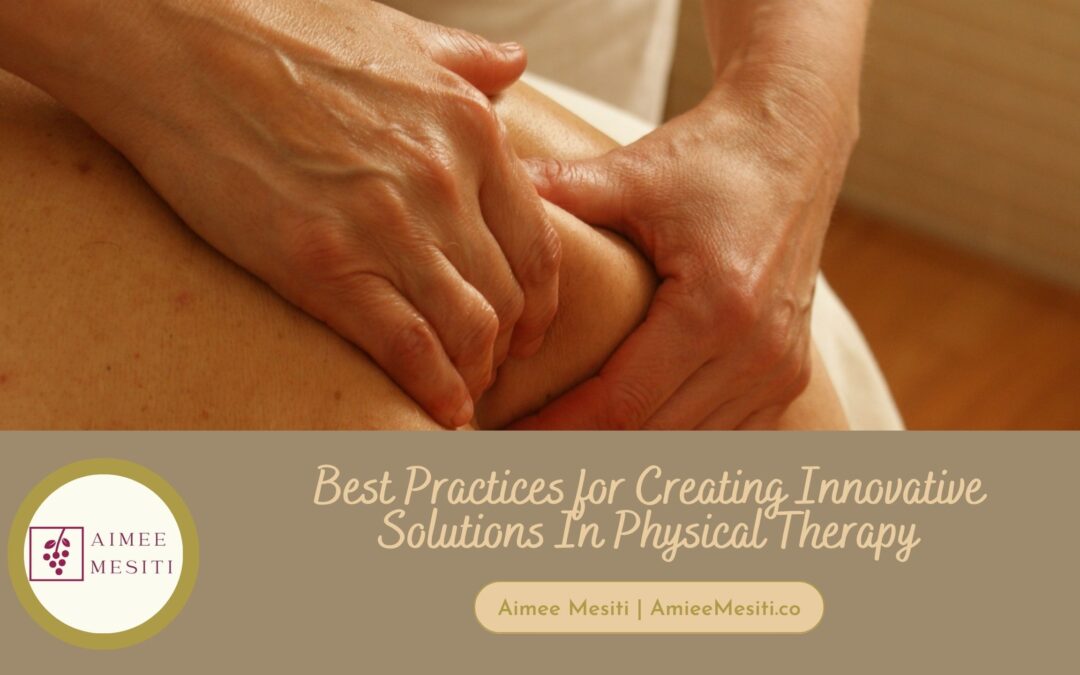Physical therapy is a dynamic field constantly evolving with technological advancements and research. As a physical therapist, staying ahead of the curve and embracing innovative solutions to enhance patient care and outcomes is essential. By incorporating best practices for creating innovative solutions, physical therapists can revolutionize their practice and provide exceptional care to their patients. Here are some key strategies to foster innovation in physical therapy.
Embrace Technology:
Technology plays a crucial role in transforming the landscape of physical therapy. Embracing technology can lead to improved assessment, treatment, and monitoring of patients. For instance, wearable devices and motion sensors can provide objective data, allowing therapists to tailor treatment plans based on individual needs. Telehealth platforms enable remote consultations, ensuring accessibility and convenience for patients. By keeping abreast of technological advancements, physical therapists can integrate these tools effectively into their practice and deliver personalized care.
Foster Collaboration:
Innovation thrives when professionals from diverse disciplines share ideas and insights. Physical therapists should actively seek collaboration opportunities with researchers, engineers, and other healthcare providers. By working together, they can combine their expertise to develop groundbreaking solutions. Collaborative efforts can range from participating in research studies to partnering with technology companies to create innovative devices. Such partnerships foster a rich knowledge exchange, leading to novel approaches and techniques in physical therapy.
Continual Education:
Staying up-to-date with the latest research, evidence-based practices, and treatment modalities is crucial for driving innovation in physical therapy. Continuous professional development ensures that therapists are well-informed about emerging techniques and interventions. Attending conferences, workshops, and webinars allows therapists to network with industry leaders and get insights into cutting-edge advancements. Lifelong learning helps therapists adapt to changing patient needs and incorporate innovative strategies.
Patient-Centered Approach:
Innovation in physical therapy should always prioritize the needs and goals of patients. By adopting a patient-centered approach, therapists can tailor their treatment plans to individual requirements, preferences, and lifestyles. This approach involves active patient engagement, shared decision-making, and collaborative goal-setting. By understanding their patients’ unique challenges and aspirations, therapists can develop innovative solutions that maximize outcomes and improve patient satisfaction.
Outcome Measurement and Research:
Innovation in physical therapy relies on evidence-based practice and outcome measurement. Therapists should regularly assess the effectiveness of their interventions and measure patient outcomes. By collecting data on treatment outcomes, therapists can identify areas to improve and develop innovative solutions to enhance patient care. Engaging in research, whether through participating in studies or conducting their research, enables therapists to contribute to the evidence base of physical therapy and advance the field.
Encourage Creativity and Experimentation:
Creating an environment that fosters creativity and encourages experimentation is vital for innovation in physical therapy. Therapists should embrace a mindset of curiosity and open-mindedness. Encouraging staff to explore new ideas, techniques, and technologies allows for developing innovative solutions. Brainstorming sessions, idea-sharing, and problem-solving can spark creativity and lead to breakthroughs in patient care.
Innovation in physical therapy is crucial for driving positive change and improving patient outcomes. As the field of physical therapy continues to evolve, therapists need to embrace these best practices and remain at the forefront of innovation for the benefit of their patients.

